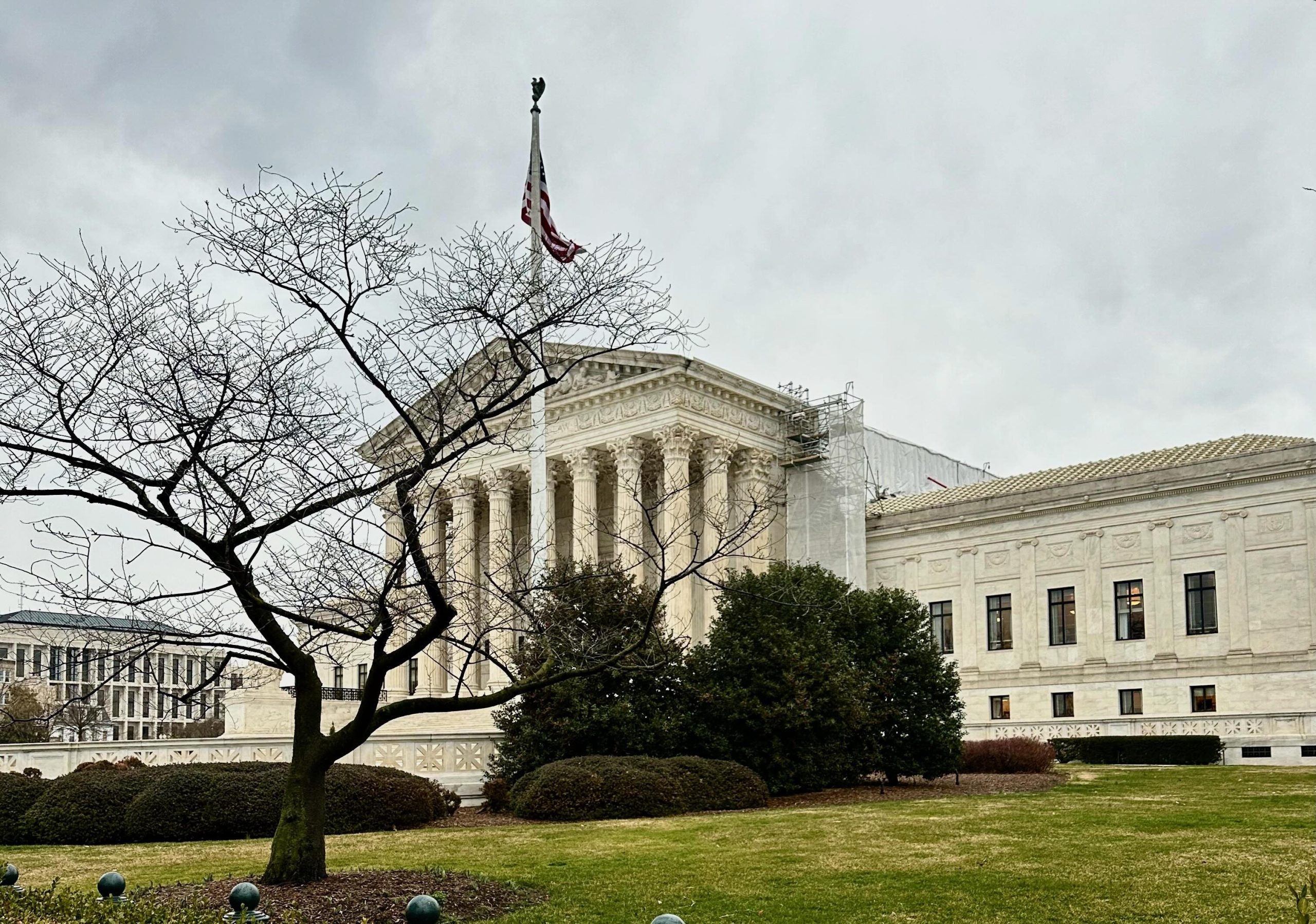The justices have the easiest job in the judiciary


ScotusCrim is a recurring series by Rory Little focusing on intersections between the Supreme Court and criminal law.
Please note that the views of outside contributors do not reflect the official opinions of SCOTUSblog or its staff.
Mid-August: the time for beach reading. Easy, light-hearted, perhaps even titillating but not too heavy or political. Hey, we’re on vacation! So as the calendar slowly sets on summertime lounging, I’ll briefly call attention to the emperors’ new clothes: The justices of the United States Supreme Court have the easiest job in all of the U.S. judiciary.
First, let’s review some facts:
1. The annual caseload of a Supreme Court justice is remarkably – laughably? – lower than that of other judges.
During the 2024-25 term, the court issued “Opinions of the Court” in 67 cases. That’s about seven cases per justice. When you remove unsigned per curiam opinions, six of the nine justices authored fewer than seven majority opinions for the year. (The SCOTUSblog Stat Pack reveals these and many other interesting facts.)
Meanwhile, statistics from the Administrative Office of the U.S. Courts (which manages the non-juridical side of federal courts) suggest that active federal appellate judges handle over 300 cases per year (exact numbers are nigh impossible to find). An active district court judge handles over 500 cases annually (and handles trials and litigation, not just appellate briefs). Looking to another source (and I cannot vouch for any of these), it is difficult to find any active federal district judge with a caseload of less than 100; some have 10 times that number. As for state court judges, precise statistics are even harder to pin down. Some sources (though from some time ago) report over 1,000 cases filed annually per judge.
But the basic point is, I think, uncontested: no matter how you “weight” the complexity of cases or calculate their numbers, the annual caseload of a Supreme Court justice is … pretty light.
To be fair, you might want to also add the petitions for review, or “certiorari” (also known as “cert”), filed at the court every year (about 4,200 by the chief justice’s most recent report). But the fact is that the justices almost never review those individually (as expert court-watchers John Elwood and Steve Vladeck have reported); their law clerks and a “cert pool” do most of that work for them. Two years ago (buried at page 11), the justices reported that 97% of the petitions are rejected “without joint discussion by the Justices.” So you might add another 130 cases a year that each justice (briefly) considers. You might also add the emergency applications (although some are cursorily rejected) – about 120 this term. Total annual caseload per justice? Maybe 35.
One might object, on a substantive level, that although the justices handle far fewer cases than other judges, their cases are more complex. But with around half the cases decided unanimously every year, are they all more complex than cases handled by other judges? Apparently not. (And remember, lower court judges already addressed those same complex cases, often in multiple variations and with less help, before they got to the justices.)
2. The Supreme Court almost always has the benefit of at least two prior judicial analyses of every case.
The significance of this fact cannot be underestimated. Lower courts must confront the most difficult legal questions fresh, without much or any prior judicial analysis. But the Supreme Court – which, as Steve Vladeck often notes, gets to “handpick” almost all the cases it reviews – has the benefit of prior legal analyses from the number of smart appellate judges and state supreme court justices who have thought and written about the case or its legal issues before. Trial court judges confronting the same difficult questions have no such benefit. And appellate judges considering the cases before them usually have only one trial court judge’s opinion in the specific case contexts they confront (and perhaps some prior general discussions of the legal issues).
3. A Supreme Court justice gets the assistance of more law clerks than any other judges – clerks from among the “brightest of the brightest,” and with prior clerkship experience.
This is a short and obvious point. Each justice has four law clerks (except the chief justice, who gets five), as well as sometimes the benefit of other lawyers and interns on the inside. As David Lat consistently reports, Supreme Court law clerks come from the very best law schools, and have previously served in the very best trial and appellate clerkships. No other judge in the country gets as much, or as talented and experienced, law clerk assistance.
4. Amicus briefing like no other court.
Five years ago SCOTUSblog reported on the “surge” and “explosion” of amicus briefs at the court – and there’s no doubt that the numbers have gone up since. Supreme Court cases now attract dozens, and sometimes over 100, “friend of the court” analyses of each case. While some amicus briefs are not much help, the parties often employ amicus “wranglers” to recruit knowledgeable authors from the small, talented cadre of experienced Supreme Court advocates (often former clerks to the justices). By comparison, most lower court cases generate no amicus assistance at all (although it’s been increasing). While some amicus briefs are not much help, law clerks (if anyone) usually read them, and they send forward only the few great ones. No courts have amicus assistance as intense and expertly written as what’s produced for the Supreme Court justices. The justices’ jobs are made easier, in the sense of working to “get it right,” from the intensely curated amicus assistance they are provided.
5. The justices get summers off.
By tradition stretching back generations, the Supreme Court finishes issuing its decisions on the merits by about July 1, and then does not hear oral arguments again until the first Monday in October. No other federal court takes such a break; state supreme courts may have reduced schedules but not a recognized full summer break. Even if it is true that our Supreme Court justices are doing more “shadow docket” work than usual this particular summer, there is no doubt that the justices, and even their clerks, consider their summers as a time for travel, teaching, vacation, and renewal. Indeed, the Administrative Office itself refers to the court’s “summer recess”; and Roberts reportedly joked about “the entire summer off” point as a young former-law-clerk lawyer.
Two centuries ago, the justices were compelled to spend their “off” time riding (by horse or carriage) to their specific circuits. I’m not recommending a return to that. There’s nothing inherently wrong about this “summers off” tradition, and no doubt other judges wish they could take part, too. But it makes the Supreme Court justices’ jobs easier by comparison.
OK, the foregoing facts should be enough to stimulate some languorous beach debate. So now I will depart from what I consider to be facts, into what some might call opinion.
So what? Some implications
1. The seriousness and nationwide finality of the court’s decisions may merit having an “easier,” or at least a lighter and well-assisted, workload.
As the Framers and ultimately the people recognized by ratifying Article III of the Constitution, the Supreme Court is an essential and independent branch of our federal government. The court provides necessary final decisions for important legal questions that have divided lower courts, and does so for the entire country. The court is requested to resolve such questions even (primarily?) when they are entwined with our most controversial societal issues. Given this, we should want the justices to have sufficient time and support so that they can “get it right” – that is, produce the best possible answers to some of the most pressing problems of our time. If other courts and judges have heavier workloads that interfere with the goal of providing the best judicial results, then presumably the best response is to reduce their workload, not increase (or cast aspersions on) the Supreme Court’s.
Remember, to echo Justice Robert Jackson, the justices are not infallible, they are final because some court must be. We need the best decision-making environment for the justices because there is no higher court of review.
2. At the same time, there really is no doubt that the Supreme Court justices could do more.
In the 1980s, the same nine-justice court, with the same October-July schedule, issued opinions in two to three times as many cases per term (hearing oral arguments in over 150 cases every term from 1970-1988). Most experts would agree (except on political or partisan grounds) that the court’s cases and decisions back then were as important and as well-decided as today.
The decision to do less is the court’s own (encouraged if not driven by a new Chief Justice William Rehnquist in 1986 and his successor (and former law clerk) John Roberts, although there’s much debate about the causes). There is constitutional debate about how far Congress can go to change this independent branch, but there are plenty of circuit splits – that is, divisions among the lower courts on a legal question, one of the main criteria that the court considers when deciding whether to take up a case – out there that the justices could resolve if they wanted to (the Short Circuit podcast and email list keeps track of these things).
Meanwhile, many court observers have recognized that while the court’s merits docket has shrunk, their opinions, including dissents and concurrences, have gotten a lot longer. (My own anecdotal observation (although untenured law professors might profit by investigating) would be to add the court’s formerly brief introductory “syllabuses” to that list.) If the justices (and their law clerks) had to write more decisions, with comparably less time per case, perhaps they would write less (shout out to Pascal) – a benefit to us all.
3. The court can (and should) do less on its emergency docket.
Meanwhile, court watchers are aware (a) that there has been a record-setting increase in cases on the court’s “emergency” or “short order” docket this year; and (b) of the critique that the court is using that too-fast, un-argued, and lightly briefed mechanism to decide important merit-based questions. This too is a choice of the justices themselves. Traditionally, the court denied virtually all interlocutory efforts to stop lower court merits proceedings, so much so that – with the exception of death penalty cases – it was viewed as a waste of time to even try. As Justice John Paul Stevens (my former boss) used to repeat (I’m paraphrasing), “we should trust our lower court colleagues” in all but the rarest of circumstances. If the justices returned to that tradition and did less there, they could do more, much more on their merits docket.
I’ll go back to my lane after stimulating this beach-time debate
As indicated a few weeks ago, I expect to occasionally wander “out of my lane” in this column (my “lane” being criminal law and its intersections with the Supreme Court’s docket). Maybe I’m way out of that lane today – but the facts above can’t be denied (can they?). Meanwhile, where do you think the justices may be reading this column?
Posted in Recurring Columns, ScotusCrim